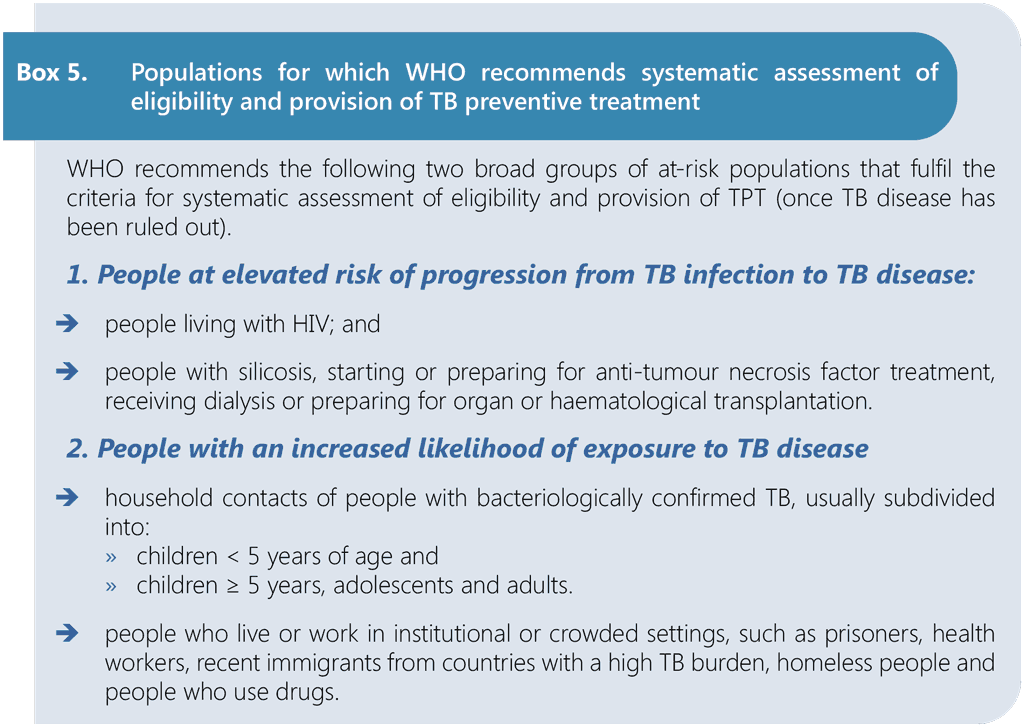كتاب روابط اجتياز لـ 1266
3.5.1 Eligibility for TPT
Despite evidence of increased prevalence of TB infection and risk of TB disease among people with diabetes, there are few data from clinical trials on the relative efficacy and safety of systematic testing and treatment of TB infection in people living with diabetes, so no specific recommendation has been made for this population (24,94,134). People living with diabetes might, however, be eligible for TPT if they are in any of the other eligible groups, such as if they are a household contact of someone with bacteriologically confirmed TB, or if they are also living with HIV. Box 5 lists the groups that WHO recommends should be systematically assessed for eligibility and provision of TPT. Additional evidence on systematic testing and treatment of TB infection among all people living with diabetes is required to inform future WHO guidelines.

3.5.2 Tests for TB infection
Should an individual with diabetes be found to be eligible for TPT due to an additional risk factor, the health-care worker providing diabetes care should ensure that the person is tested for infection, as appropriate. WHO recommends the following tests for TB infection:
- tuberculin skin test (strong recommendation, very low certainty of evidence)
- interferon-gamma release assays (strong recommendation, very low certainty of evidence)
- M. tuberculosis antigen-based skin tests (conditional recommendation, very low certainty of evidence).
Data on the performance of these tests on people living with diabetes are limited. Further guidance on implementation considerations for increasing access to testing for TB infection can be found in WHO’s operational handbook on tests for TB infection (135).
3.5.3 TPT regimens
Current WHO-recommended TPT regimens include 6 or 9 months of daily isoniazid, 4 months of daily rifampicin, 3 months of weekly isoniazid and rifapentine, 3 months of daily isoniazid and rifampicin, and 1 month of daily isoniazid and rifapentine. For contacts of people with MDR/RR-TB, a 6-month daily regimen of levofloxacin is recommended (136). To date, few high-quality trials have been conducted to investigate the efficacy and safety of TPT among people living with diabetes. A recent randomized controlled trial to assess adverse events and the tolerability of 3 months of daily rifampicin (600 mg/day) as compared with 6 months of isoniazid (300 mg/day) plus pyridoxine (75 mg) among 130 people with diabetes was prematurely halted due to concern about safety (137). The older age of the study population (average age, 57 years) and the high proportion of poor glycaemic control (average glycated haemoglobin, 8.65%) may have contributed to the rates of adverse events. Nevertheless, this population may also have had a higher risk for developing TB. A randomized controlled trial to assess the risks and cost-effectiveness of TPT with 3 months of weekly isoniazid and rifapentine among people living with diabetes in Uganda and the United Republic of Tanzania was under way at the time of publication of this operational handbook. Reporting is due in 2026 (138).

 تعليق
تعليق